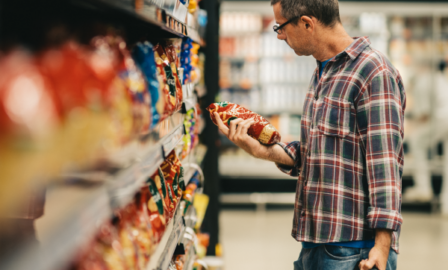Understanding and Navigating Food Label Regulations
Food labels provide essential information to consumers and assist with their purchasing decisions, with 59% of consumers saying they always read labels on a packaged food before buying it for the first time. The most common information viewed on product labels is calorie content, with 40% of consumers looking at this section. Among producers, reviewing labels can be a detriment, as it’s common for consumers to become overwhelmed with unfamiliar and lengthy ingredient names. In recent years, it’s been increasingly important for food companies and producers to understand and comply with changing food label regulations.
Even though food additives are regulated by the government, with the Food and Drug Administration (FDA) maintaining a list of over 3,000 ingredients, consumers still show concern about additives, food safety, and label accuracy. This reveals how important the label is to both consumers and businesses. This relatively small area on a product not only provides important information to the consumer, but it’s also exceptionally influential when persuading a consumer to purchase the product. Over the years, reading food labels has gained increased attention, particularly as it relates to educating consumers and helping them make better eating decisions.
What Are Consumers Looking for on Food Labels?
Surprisingly, the general presence or absence of key information matters more in decision-making than the percentage daily values or label design. With such attention being placed on the food label, and interest only growing, it’s important for companies to understand what draws the consumers’ eye and drives their decision-making for food products.
When considering consumer decision-making, sugars and calories are key. A study showed that 57 percent of consumers are looking for sugars and 45 percent are looking at information on calories. This is not shocking, since consumers typically tie these criteria to healthy eating. Additionally, as a result of the January 2020 Nutrition Facts Label Education Campaign, sugar and calories were the items that had to be updated by companies with annual sales of $10 million or greater due to the attention drawn to this area of product labels. Modifications involved displaying the calories in a larger bold font and separately listing “Added Sugars.”
Along with these label changes, consumers are checking for a shorter and less complicated ingredient list. Clean label is an evolving term, and with 20% of consumers buying products based on the label claiming clean ingredients, it’s a growing priority. It is, however, still a newer and broad space, with terms like transparent, natural, and no preservatives being used interchangeably to describe the field. Since the term is difficult to define and strict guidelines are not specified or enforced, companies are taking different approaches when making these claims. For instance, some companies are reassessing their products and changing recipes to gain consumer buy in. This can impact cost, shelf life, and sensory attributes. This approach and others show that marking products with a clean label is valuable but takes time, money, and creativity.
Food Modernization Act
The government understands the importance of food label regulations and has focused their attention on ensuring standardization is up to date with the ever-changing market. In January 2020, the FDA enacted new standards for the nutrition facts label regarding serving size, calorie count, font size, and added sugar content. The goal of these changes was to provide consumers with an easier and better way to understand the label and be provided with the information they need.
Recently, the Food Labeling Modernization Act of 2021 has brought further attention to the food label and attempted to create more standardization to highlight the overall health value of products. Along with that, it would require the FDA to define terms more clearly like “natural,” “healthy,” “artificial,” and “synthetic.” This is important for the industry since more guidelines for the terms will allow for better education of consumers and properly labeled products. Actions such as this would provide clearer information about what’s included in products as well as a better background to what those terms mean. Even though the Food Modernization Act of 2021 has yet to be passed, and a schedule for implementation has not been set, it’s important to recognize and plan for the potential implications.
Food Label Regulations in the Future
Since the most recent food label changes were just enacted in 2020, it will be important to build a centralized label management system to avoid duplication of work and minimize inefficiencies. A label management system will also provide traceability and standardization of items like barcodes, which among other advantages, is beneficial in the event of a food recall. Looking forward, the heightened attention on labels and consumer understanding will continue to grow, and food label regulations will evolve to fit the ever-shifting conditions.
Subscribe to Clarkston's Insights
Contributions from Addie Schmidt



